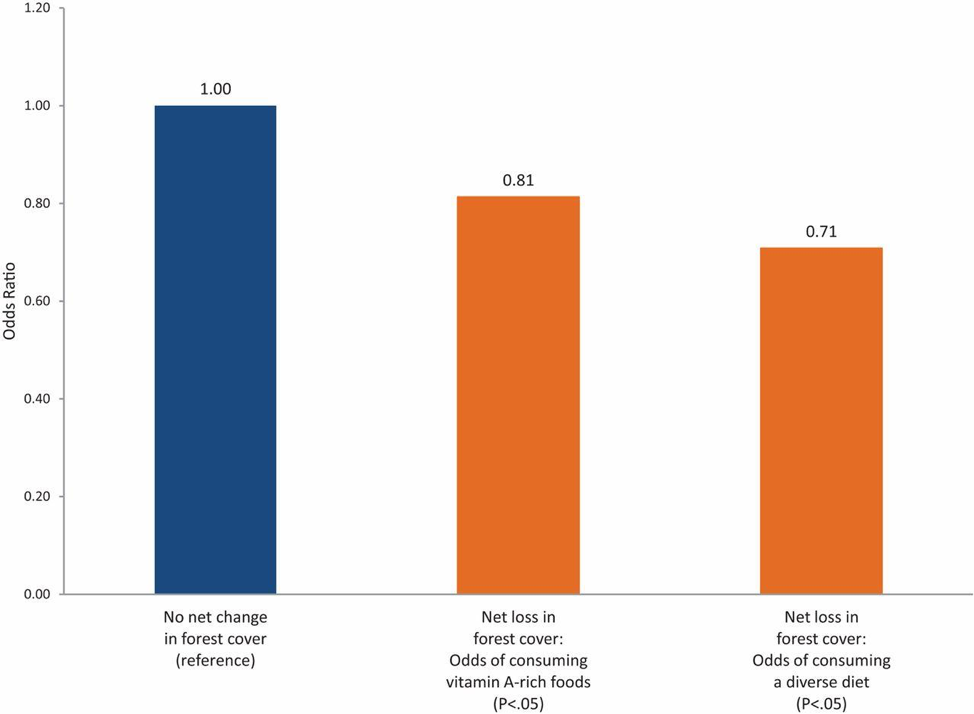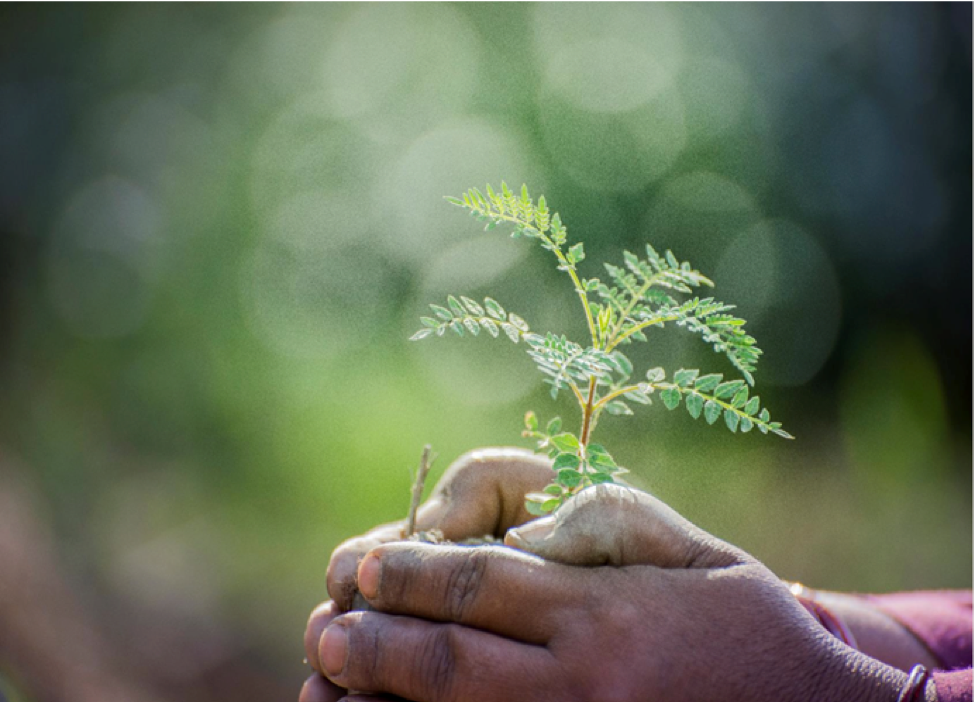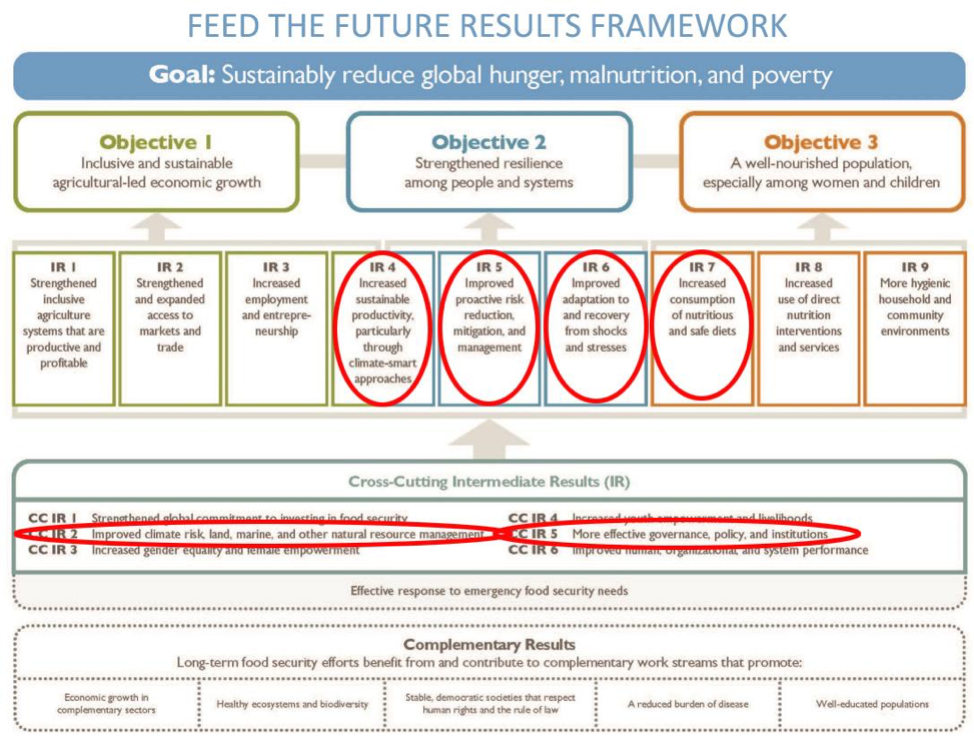Showing the Linkages Between Dietary Diversity and Biodiversity with Earth Observations Data

This post was written by Kiersten Johnson, US Agency for International Development, Bureau for Food Security.
“The health of ecosystems on which we and all other species depend is deteriorating more rapidly than ever. We are eroding the very foundations of our economies, livelihoods, food security, health and quality of life worldwide.”
-- Robert Watson, Chair, Intergovernmental Science-Policy Platform on Biodiversity and Ecosystem Services
May 22 is International Day for Biological Diversity. This year, we mark the day in the wake of a dire UN report from the Intergovernmental Science-Policy Platform on Biodiversity and Ecosystem Services (IPBES) warning that nature is declining globally at rates unprecedented in human history.
Around one million plant and animal species face extinction in the coming decades, with sobering implications for human well-being in terms of increased threats to food security and agriculture, health, water, oceans, and land. [Download the full IPBES 2019 report here; see also the Rockefeller Foundation–Lancet Commission on Planetary Health report articulating similar conclusions].
These assessments are based on a growing evidence base demonstrating the key roles that ecosystem services play in generating human well-being. As Earth observations data have become increasingly accessible, possibilities have expanded for integrating these data with population-based datasets like the Demographic and Health Surveys -- the gold-standard survey program that collects cross-nationally comparable data on critical aspects of population, health and nutrition data throughout the developing world. Integrating these two types of data has allowed researchers to begin to explore associations between the natural environment (e.g., biomass productivity or tree cover) and important nutrition-related outcomes like stunting and dietary diversity.
Early efforts in this regard used NASA's satellite remote sensing data combined with Demographic and Health Surveys (DHS) data from four West African countries (Mali, Burkina Faso, Guinea and Benin) to assess the association between the health of vegetation (using a normalized differential vegetation index - NDVI - variable) growing around the time of a child’s birth and the survival and nutritional status of that child up to the age of two years. The study found that NDVI had a positive association with child survival and nutrition -- net of markets and programmatic interventions -- in countries with wide variability in vegetative quantity and health.
Subsequent studies looked more specifically at the relationship between biodiverse environments (such as forested areas) and aspects of children’s nutrition. A 2013 study using data from the Malawi DHS (Johnson et al. 2013) and a forest cover variable obtained via Earth observations imagery (MODIS Vegetation Continuous Fields) showed that children living in places with greater forest cover were more likely to consume vitamin A-rich fruits and vegetables. It also found that children living in places that experienced forest cover loss over time had a lower likelihood of consuming a diverse diet, and particularly vitamin A-rich fruits and vegetables, than children living in places with no net loss of forest cover (see Figure 1).

Figure 1. Malawian children living in places that experienced forest cover loss over time had a lower likelihood of consuming a diverse diet, and particularly vitamin A-rich fruits and vegetables, than children living in places with no net loss of forest cover.

Later studies that used pooled data from multiple Demographic and Health Surveys obtained similar results. Researchers from the Center for International Forestry Research used DHS data on food consumption for children from 21 African countries and a forest cover variable obtained via Earth observations imagery (MODIS Vegetation Continuous Fields) to examine the relationship between tree cover and the nutritional quality of children’s diets. They also found a statistically significant positive relationship between tree cover and dietary diversity and well as specifically fruit and vegetable consumption (Ickowitz et al. 2013). In a similar pooled analysis using DHS and Earth observation data, researchers from the University of Vermont’s Gund Institute found that children living in places with high levels of exposure to forest cover had at least 25% greater dietary diversity compared to children living in areas lacking exposure to forest cover (Rasolofoson et al., 2018).
Evidence from the empirical research on diets and biodiverse environments continues to demonstrate the importance of biodiversity for human well-being -- important food for thought as we are forced to contemplate a world that is facing threats of climatic change, ocean acidification, land degradation, water scarcity, overexploitation of fisheries, and biodiversity loss, all of which pose serious challenges to the development and human well-being gains of the past several decades.

This figure shows where the research in today's post contributes to the Feed the Future Results Framework
